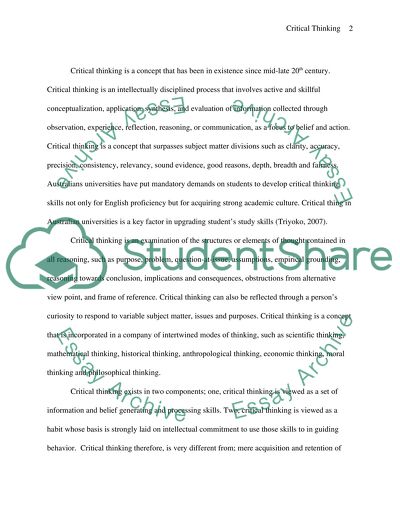Cite this document
(Critical Thinking Concept Term Paper Example | Topics and Well Written Essays - 1250 words, n.d.)
Critical Thinking Concept Term Paper Example | Topics and Well Written Essays - 1250 words. Retrieved from https://studentshare.org/education/1523917-critical-thinking-high-school-essay
Critical Thinking Concept Term Paper Example | Topics and Well Written Essays - 1250 words. Retrieved from https://studentshare.org/education/1523917-critical-thinking-high-school-essay
(Critical Thinking Concept Term Paper Example | Topics and Well Written Essays - 1250 Words)
Critical Thinking Concept Term Paper Example | Topics and Well Written Essays - 1250 Words. https://studentshare.org/education/1523917-critical-thinking-high-school-essay.
Critical Thinking Concept Term Paper Example | Topics and Well Written Essays - 1250 Words. https://studentshare.org/education/1523917-critical-thinking-high-school-essay.
“Critical Thinking Concept Term Paper Example | Topics and Well Written Essays - 1250 Words”, n.d. https://studentshare.org/education/1523917-critical-thinking-high-school-essay.


